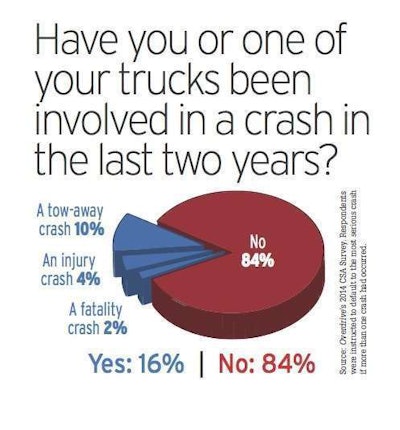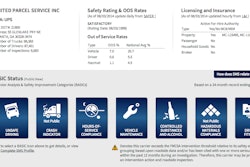
This is the second part of the CSA’s Distorted Rankings series, within the CSA’s Data Trail series. Click here to read Part 1.
CSA was intended as an improvement to FMCSA’s SafeStat intervention prioritization system that used primarily out-of-service violations and others uncovered during onsite company investigations, part of the agency’s long-running safety rating system. Given the agency’s small staff relative to the size of the motor carrier population, the rating system, with Safestat, was limited in the number of carriers it could reach, as well as its ability to update those ratings.

Today, that system remains the official rating element of FMCSA’s safety program, using ratings of Satisfactory, Conditional and Unsatisfactory. The CSA SMS runs alongside it, giving more of a real-time window into inspections, violations and crashes.
However, the difference in results produced by each system is marked. In some quarters, eliminating that disconnect is seen as at least a partial solution to public confusion over what the scores mean. It’s a key component of why critics feel use of the scores in business decisions is so onerous.
The discrepancies are likely to remain until a Safety Fitness Determination rulemaking is proposed and completed, which will take years. Slated for proposal late this year, according to recent estimates, the SFD would use roadside inspection violation and crash data to rate carriers with enough data in the system; the grading would not be on a curve and would replace the current rating model.
This would give entities such as brokers, shippers and insurance companies a more hard-and-fast indication of a carrier’s safety performance. Given SMS reliability problems at the small-carrier level, however, respondents to Overdrive’s CSA Survey showed only a 20 percent approval for the notion of using inspections and crashes toward establishing the SFD.
In the brokerage realm, ambulance-chasing attorneys are promoting ways to get courts to rule a broker as negligent if the broker contracts with a carrier with a bad CSA score and the carrier later gets in an accident. Using the CSA SMS has thus become due diligence for some, but Tucker Company Worldwide General Counsel Darin Day hammers on the difficulties some brokers and shippers have with the system, particularly given the safety rating/SMS disconnect.
Day came into the April 29-30 CSA Subcommittee meeting with a long list of carriers with four or more BASICs at alert status. Such carriers in many cases would fall clearly into FMCSA’s “High Risk Carrier” category, prompting an automatic intervention/review. All of the carriers in his list, however, were rated Satisfactory.
“Who’s safe?” he said. “I have no idea.”
FMCSA’s Quade explains that, minus the SFD rulemaking, the agency’s stuck with the SMS/rating disconnect. Putting expiration time limits on carrier safety ratings in the old system, which also has been discussed, likely would require more time-consuming rulemaking, he says. And the current rating system is so far entrenched in the trucking business that doing such would have unintended consequences of its own – expiring Satisfactory ratings would be missed by those carriers.
Legislation introduced in the House of Representatives in May and supported by the Transportation Intermediaries Association of freight middlemen aims to cut down on negligent-selection lawsuits by establishing a motor-carrier “hiring standard” that specifically excludes the CSA BASICs. The legislation stops well short of calling for removal of the SMS scores from public view, however.
Quade says he’d have more confidence in the CSA SMS than in the old rating system: “I would use a Conditional [rated] carrier with good performance data [in the CSA SMS] before I would use a Satisfactory carrier with bad performance data.”
Such public use of the data beyond law enforcement, and FMCSA’s encouragement of it, is the subject of long-ongoing litigation brought by the Alliance for Safe, Efficient and Competitive Truck Transportation, which represents motor carriers, shippers and brokers, among others.
FMCSA continues to be unmoved by CSA-use realities, given its investment in the program. Yet many in the industry would agree with transportation attorney Henry Seaton’s assessment of CSA: “The closest thing to it is over on the military side where you spend 10 years and however much money, and the plane doesn’t fly.”
See Part 3 of this series on Wednesday.












